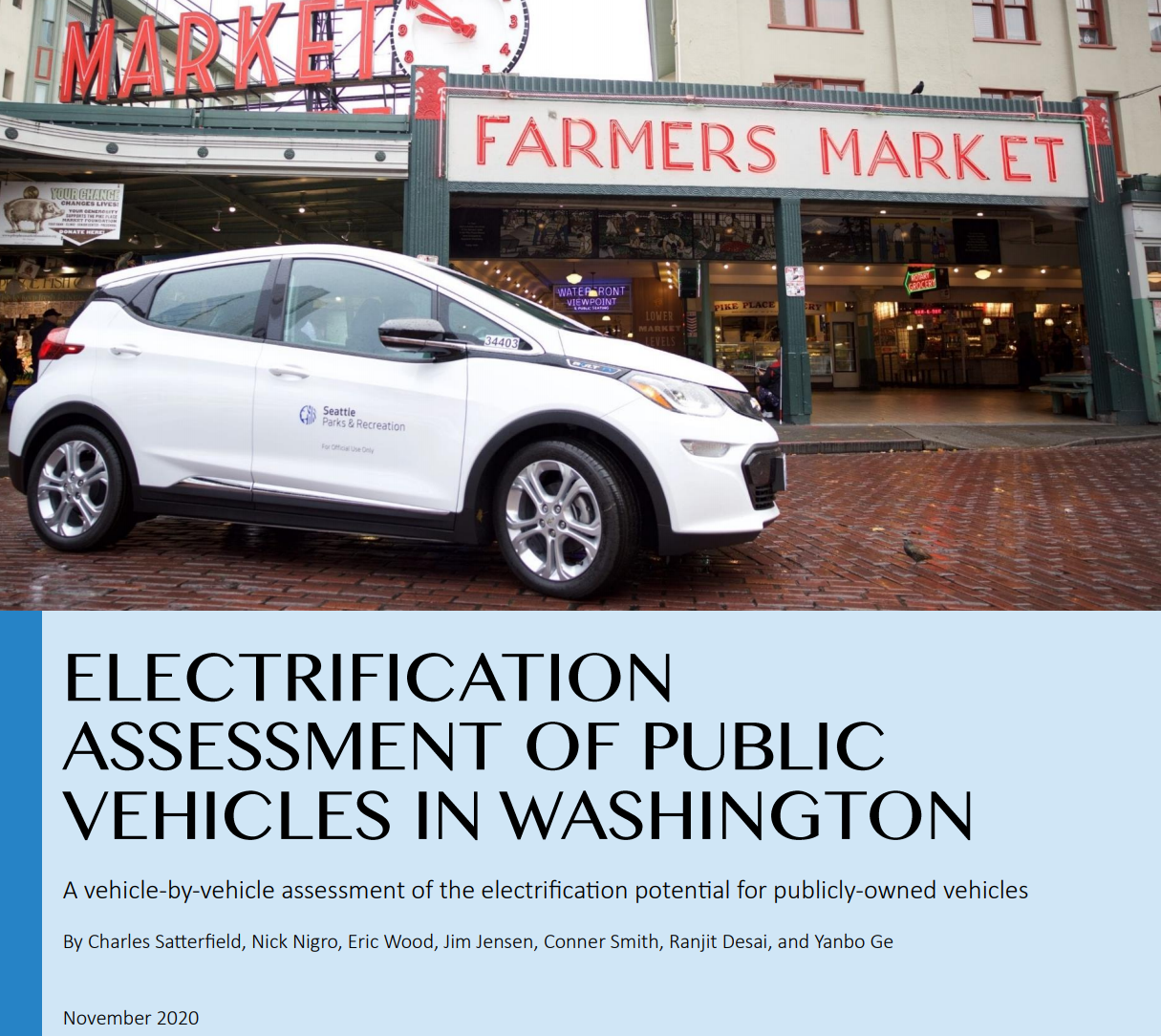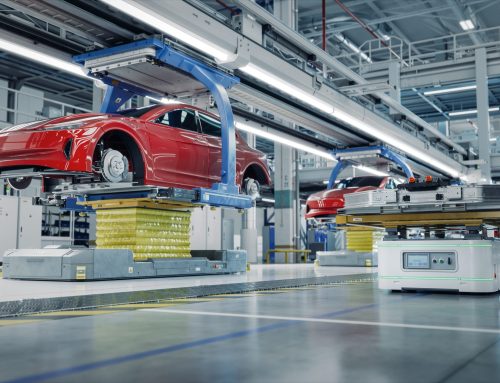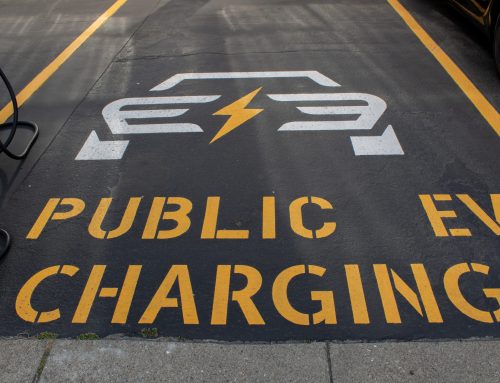
Source: JTC
Leading EV markets like Washington continue to give credence to the predictions from Cox Automotive that the pandemic will only be a speed bump in the move to widespread transportation electrification. After falling by 23 percent in the first half of 2020, Washington EV sales have rebounded and were down only 0.5 percent in the third quarter compared to 2019. As the EV market continues to recover, state legislators are moving forward with efforts to electrify fleet vehicles across the state. According to a forthcoming analysis led by Atlas in partnership with the National Renewable Energy Laboratory (NREL) and the Washington State University Energy Program, Washington state is positioned to electrify many of its publicly owned vehicles by the year 2035.
The study team evaluated the electrification potential on a vehicle-by-vehicle basis for nearly 29,000 publicly-owned vehicles in the state for the Washington Joint Transportation Committee (JTC). This included all manner of light-, medium-, and heavy-duty vehicles being operated by state agencies, school districts, and transit agencies across Washington. The outcome of the analysis was favorable for EVs, revealing several cost-effective pathways to widespread electrification over the next 15 years.
EVs currently represent only roughly three percent of all fleet vehicles in Washington, below existing targets such as those set forth in Governor Inslee’s EV Fleets Initiative in 2018. With near-term policy action and targeted investments in infrastructure, the state can accelerate ongoing efforts to advance electric vehicles and solidify its leadership position in the electric vehicle market in the United States. The results of the analysis show that more than 1,650 vehicles in the fleet could be electrified cost-effectively today, resulting in a savings of more than $72 million over the lifetime of the vehicles.
A significant portion of these potential savings come from the electrification of transit buses, which were the most cost-effective category of vehicle to electrify in the present day that were included in the analysis. Electric transit buses are already cost competitive with conventional models in many cases and the state offers rebates for the electrification of these fleets through existing programs like the Clean Energy Fund and Green Transportation Capital Grants Program. In total, the state has awarded more than $62 million for transportation electrification projects and King County Metro, the state’s largest transit agency, has committed to electrify their entire 1,600 bus fleet by 2040, representing approximately half of all transit buses in Washington.
The study recommends that the state “consider developing a roadmap to swiftly increase the share of EVs in the public fleet between 2020 and 2035” as doing so could result in billions in potential savings. Even under the worst case estimate of technological advancement included in the analysis, more than half of all public fleet vehicles in Washington have cost competitive EV alternatives by 2035. In this unfavorable scenario, a complete conversion of the fleet to EVs would result in savings of more than $250 million. Savings potential associated with 100 percent electrification explodes to more than $3.4 billion when assuming reductions in the cost of charging infrastructure and cost-saving innovations such as reduced battery costs for electric trucks. This assumes the vehicles would be purchased all at once in 2035, which is of course, not how fleet procurements work. The state can leverage a roadmap to distribute procurements in a way that maximizes savings potential over the next 15 years.
The last ten years have shown us how an 87 percent decline in the cost of batteries has facilitated a more than 18-fold increase in annual U.S. passenger EV sales between 2011 and 2019. At least 62 new passenger EVs models are expected to reach the market by the end of 2022, creating even more savings potential as the first non-luxury EV pickups enter the market. This growth is also coming to the medium- and heavy-duty vehicle market where legacy manufacturers are beginning to release EV models. On November 12, 2020, Ford announced the all-electric Transit commercial van that will be available at $45,000 starting in 2021. This is significantly cheaper than the current repowered Ford vans available from Lightning Systems for more than $100,000. Increasing model availability and technological innovations will only improve the prospects of fleet electrification for states like Washington.
With significant public funding remaining through programs like the Volkswagen Settlement and policy leadership through the adoption of the ZEV Truck and Bus MOU in July 2020, the state is well positioned to cement its leadership position in the EV market in the United States. Public fleet managers can lead by example and create early demand for new vehicle offerings and technologies in the state. Listen in to the presentation of the results and key findings from the analysis led by Atlas’s Nick Nigro and Charles Satterfield from 9am to 12 pm PST tomorrow, November 17th.


